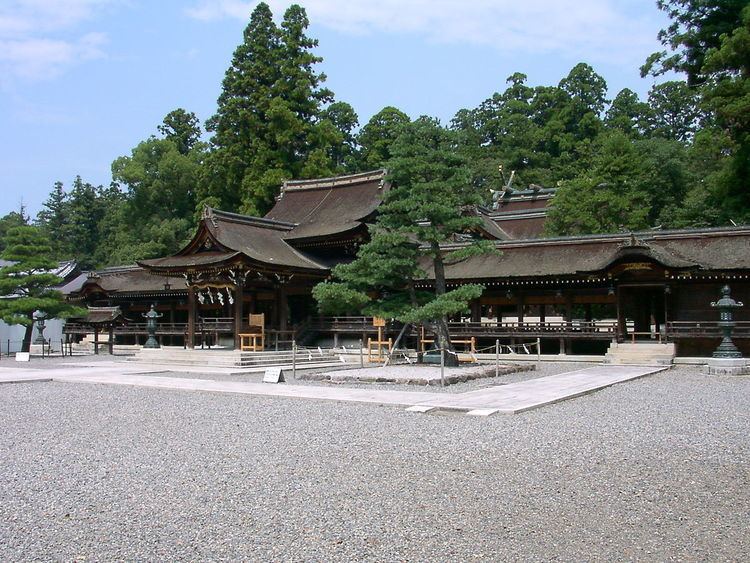Founded 660 Phone +81 749-48-1101 | Website www.tagataisya.or.jp | |
 | ||
Similar Taga Taisha‑mae Station, Miyazu Station, Omi Shrine, Hikone Castle, Takamiya Station Profiles | ||
Taga-taisha (多賀大社) is a Shinto shrine located in Taga, Shiga Prefecture, Japan dedicated to Izanagi and Izanami. It is associated with long life, successful marriage and good fortune. The shrine is frequently referred to as O-taga-san (お多賀さん) by local residents. The gardens of the inner shoin are a nationally designated Place of Scenic Beauty.
Contents
History
This ancient shrine is old enough to have been mentioned in the Kojiki. According to that text it dates from 620, having been built during a time when Buddhism and Shinto were both doing very well. It contains both a Buddhist temple and Shinto shrine. The shrine has beautiful garden and a stone bridge, which were constructed by Toyotomi Hideyoshi as an offering for his mother's long life. It is next to the study attached to the Shrine offices.
Festivals
Specialty goods
Access
About 20 minutes walk from Taga Taisha-mae Station on the Ohmi Railway Taga Line, or about 10 minutes by bus from Minami-Hikone Station on the JR West Biwako Line.
